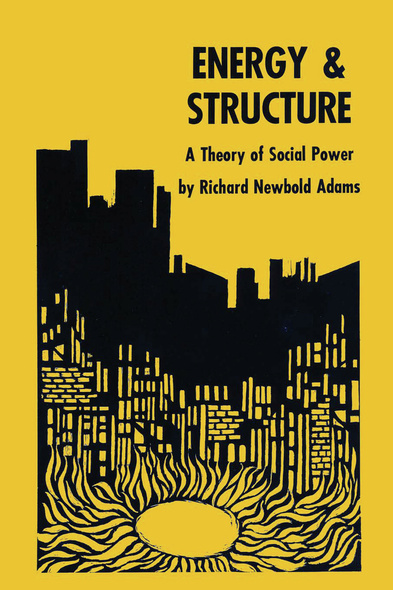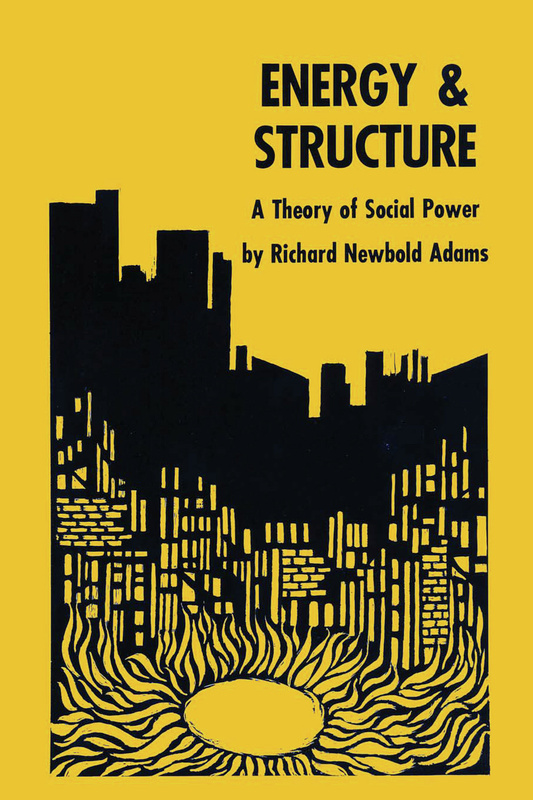All social structures are essentially power structures dependent on energy. The concept of power and the role of energy in social organization are crucial and timely concerns, especially in light of the current apprehension about future energy resources. In Energy and Structure, Richard N. Adams argues that social power affects humanity's approach to ecological, economic, and political problems, directing people to seek solutions that are often deceptively shortsighted.
Adams, an anthropologist, proposes that social power is directly derived from control over energy processes. He identifies how power and mentalistic structures constitute fundamental determinants that shape the lives of people at all stages of cultural development, forcing them to accept alternatives often far removed from their desires. His central thesis is that the amount of power in any system varies with the amount of control exercised over the environment and that increasing power and control lead to increasing centralization of decision-making, social marginalization, and environmental despoliation. Thus the more highly developed societies, by virtue of their greater controls, are responsible for the greater ultimate subordination and destruction of human potential, as humanity combines technological advances with a growing inability to exercise good judgment with respect to our own survival.
Energy and Structure begins with an examination of the basic theory of social power—what it is and how it works. Adams defines and differentiates between the concepts of power and control, authority and legitimacy, power domains and levels. He then examines the underlying metatheory of energetic and mentalistic structures and provides an analytic model of the evolution of power, from the primitive band to modern nations. He predicts the emergence of supranational blocs and discusses other future possibilities. Throughout, his theoretical points are solidly supported by examples drawn from a wide range of cultures.
The essay will be rewarding reading for students of social power irrespective of their disciplinary leaning. Most important, it integrates serious thinking about energy and social change, reaching some disquieting conclusions to which attention must be paid.
- Preface
- Acknowledgments
- Part One. The Nature of Power
- 1. Introduction
- 2. Basic Elements
- 3. Additional Considerations
- A. Power and Control
- B. Reciprocity and Omnipresence
- C. Authority and Legitimacy
- D. Types of Power Exercise
- 4. The Variety of Operating Units
- A. Fragmented Units
- B. Informal Units
- C. Formal Units
- 5. Power Domains and Levels
- A. Power Domains
- B. Levels and Confrontations
- C. The Expansion of Domains and Levels
- Part Two. Energetic and Mentalistic Structures
- 6. A Note on Structure, Mind and Matter, and Culture
- 7. The Energetic
- A. Energy and Flow
- B. The Second Law—and Order
- C. Man in the Ecosystem
- D. Human Society: An Expanding System
- 8. The Mentalistic
- A. Binary Distinctions and Levels
- B. The Nature of Ranking
- C. Value Classes
- D. Some Mentalistic-Energetic Regularities
- Part Three. A Model of the Evolution of Power
- 9. The Framework
- A. Evolution: General and Specific
- B. The Growth Sequence
- 10. Levels of Integration
- A. Protolevels
- B. The Local Level: Band and Tribe
- C. The Regional Level and the Centralizing Role of Dogma
- D. The State Level and Social Stratification
- E. The National Level and the Recent Historic Era
- 11. Replicative Processes
- A. Energetic Expansion and Mentalistic Reduction
- B. The Phases of Expansion
- C. “Vertical” and “Horizontal” Oscillations
- D. Power to the Top: The General Theory
- 12. Social Power and the Future
- A. Some Things That Cannot Happen
- B. What Level of Life?
- 9. The Framework
- Works Cited
- Index





